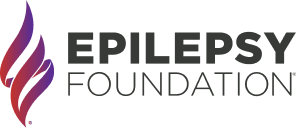SYNGAP1-Related Epilepsy

What Is SYNGAP1?
SYNGAP1 is a rare genetic disorder caused by a variant on the SYNGAP1 gene. Epilepsy is a common feature of SYNGAP1-related disorders. Many individuals develop epilepsy with varying degrees of severity, and/or autism spectrum disorder and other behavioral, social, and sensory issues.
The SYNGAP1 gene is located on chromosome 6 and is responsible for producing the SYNGAP protein. High levels of SYNGAP are present in the brain and is essential for proper function and development. SYNGAP is a key regulator of the neural mechanisms of learning and memory where neurons communicate with each other (synapses).
Other names for SYNGAP1-related epilepsy include SYNGAP1-related intellectual disability (SYNGAP1-ID), autosomal dominant mental retardation-5 (MRD5), SYNGAP1-related developmental and epileptic encephalopathy, SYNGAP1-related disorders.
Seizures and Epilepsies Associated with SYNGAP1 Variants
The majority of persons with genetic alterations in SYNGAP1 present with generalized seizures. Seizure types associated with SYNGAP1 include:
- Atypical and typical absences
- Myoclonic seizures
- Atonic seizures
- Eyelid myoclonia with absences (EMA)
- Myoclonic-atonic epilepsy (MAE or Doose syndrome)
More frequently, persons have combined features of EMA and MAE. In persons with this gene, a characteristic feature is eyelid myoclonia that evolves to a myoclonic-atonic or atonic seizure.
Seizures often begin around 4 months to 7 years with an average age of 2 years. Seizure triggers are frequent during the active phases of epilepsy, which may reach 100 or more seizures per day in some individuals. Eating is a reported seizure trigger for about one-fourth of individuals. No link has been observed between the severity and the age at which seizures are present, the diagnosis of autism spectrum disorder or the degree of cognitive impairment.
Approximately half of people with SYNGAP1-related epilepsy respond to a single anti-seizure medication treatment, while the remainder have drug-resistant epilepsy. About 18% have become seizure-free at the average age of 7.5 years (range 3-13 years).
Non-Seizure Symptoms of SYNGAP1 Variants
Developmental delay or intellectual disability is present in nearly all people affected by SYNGAP1. Typically, developmental delay is evident during the first two years of the child’s life. This leads to an intellectual disability diagnosis. Two-thirds of children also exhibit hypotonia (low muscle tone), and a smaller group have ataxia (poor balance) and/or other gait abnormalities. Other observations include children who start to walk as early as 10 months of age to as late as 6 years.
In addition, language development is also impaired. Some children may start to speak as early as 8 months of age. However, one-fourth to a third of children remain nonverbal after five years of age. Among those who are verbal, some speak single words only, whereas others may form simple short sentences. Older children typically go on to develop moderate to severe intellectual disability. In some individuals the intellectual disability may also be mild. About 1 in every 2 individuals also develop autism spectrum disorder.
Aside from cognitive and social impairment, affected individuals may exhibit a spectrum of behavioral and sensory symptoms. These may include inattention, impulsivity, high pain threshold, aggression, mood swings and problems with feeding and sleeping. A small percentage of individuals may also develop additional features, such as microcephaly (smaller than normal head circumference), eye abnormalities (e.g., strabismus) and GI dysfunction (e.g., constipation).
How Is SYNGAP1-Related Epilepsy Diagnosed?
The diagnosis of SYNGAP1-related epilepsy is established by genetic testing. Genetic testing is recommended for individuals with developmental delay or intellectual disability with or without generalized epilepsy and autism spectrum disorder. In many instances, testing may begin with chromosomal microarray analysis (CMA) because of the non-specific nature of developmental delay/intellectual disability. CMA detects genome-wide large chromosomal deletions/duplications.
Identification of SYNGAP1 variants is also possible through single gene sequencing and/or multigene panel testing. Alternatively, exome sequencing may be used. Diagnosis is confirmed by identification of either a heterozygous pathogenic variant in SYNGAP1 or a deletion of the chromosome 6.
While electroencephalography (EEG) and magnetic resonance imaging (MRI) are often done to evaluate the epilepsy, they are not diagnostic for SYNGAP1-related epilepsy. A positive link between developmental progress and an EEG has been observed in persons with generalized epilepsy. Brain MRI is typically normal but non-specific abnormalities have been reported in some individuals.
How Is SYNGAP1 Treated?
Currently, there are no known gene-specific treatments for SYNGAP1-related symptoms. SYNGAP1-related epilepsy treatments are generally symptomatic and supportive and depend on the individual. In general, standard guidelines are followed for treating developmental delay, intellectual disability, autism spectrum disorder, epilepsy and other manifestations.
Valproate and lamotrigine are the most prescribed anti-seizure medications. Cannabidiol, which has not yet been proven to be effective, is occasionally prescribed in conjunction with anti-seizure medications. Motor dysfunction is typically managed by physical, occupational and speech therapy. Children with social and behavioral difficulties may also benefit from seeing a pediatric psychiatrist. It is also recommended that families seek genetic counseling and psychosocial support. Effective management is often highly personalized and relies on the concerted efforts of a multidisciplinary team.
Many of the ongoing clinical research is focused on understanding SYNGAP1-related symptoms and identifying potential biomarkers. There are no therapies to manage the disorder that have yet been developed to enter clinical trials.
How Common Is SYNGAP1?
According to the SYNGAP Research Fund, SYNGAP1 is one of the most common single gene causes of intellectual disabilities. The incidence of SYNGAP1 is estimated to be 1-4 out of 10,000 individuals. Approximately 700 patients have been identified through genetic testing. However, prevalence is likely to be much higher considering the incidence estimates and the potential underestimation of milder phenotypes in the current population.
What Is the Outlook for SYNGAP1?
Disclaimer: This field is rapidly evolving, and each individual has their own course. We are constantly learning and published data may be slow to come.
Most individuals with SYNGAP1 are faced with life-long disabilities. Epilepsy is generally treatable, but children may deteriorate or regress when their epilepsy is uncontrolled.
For More Information:
- SYNGAP Research Fund
- SYNGAP1 Foundation and resource guides in multiple languages
- National Organization for Rare Disorders
Resources
Epilepsy Centers
Epilepsy centers provide you with a team of specialists to help you diagnose your epilepsy and explore treatment options.
Epilepsy Medication
Find in-depth information on anti-seizure medications so you know what to ask your doctor.
Epilepsy and Seizures 24/7 Helpline
Call our Epilepsy and Seizures 24/7 Helpline and talk with an epilepsy information specialist or submit a question online.
Tools & Resources
Get information, tips, and more to help you manage your epilepsy.


